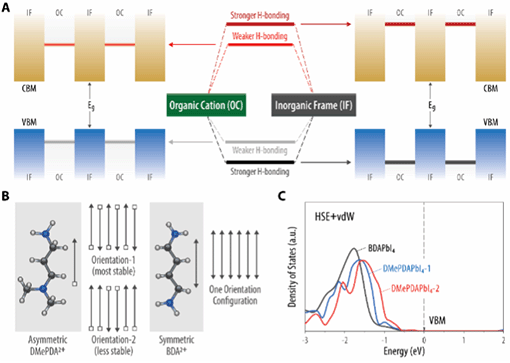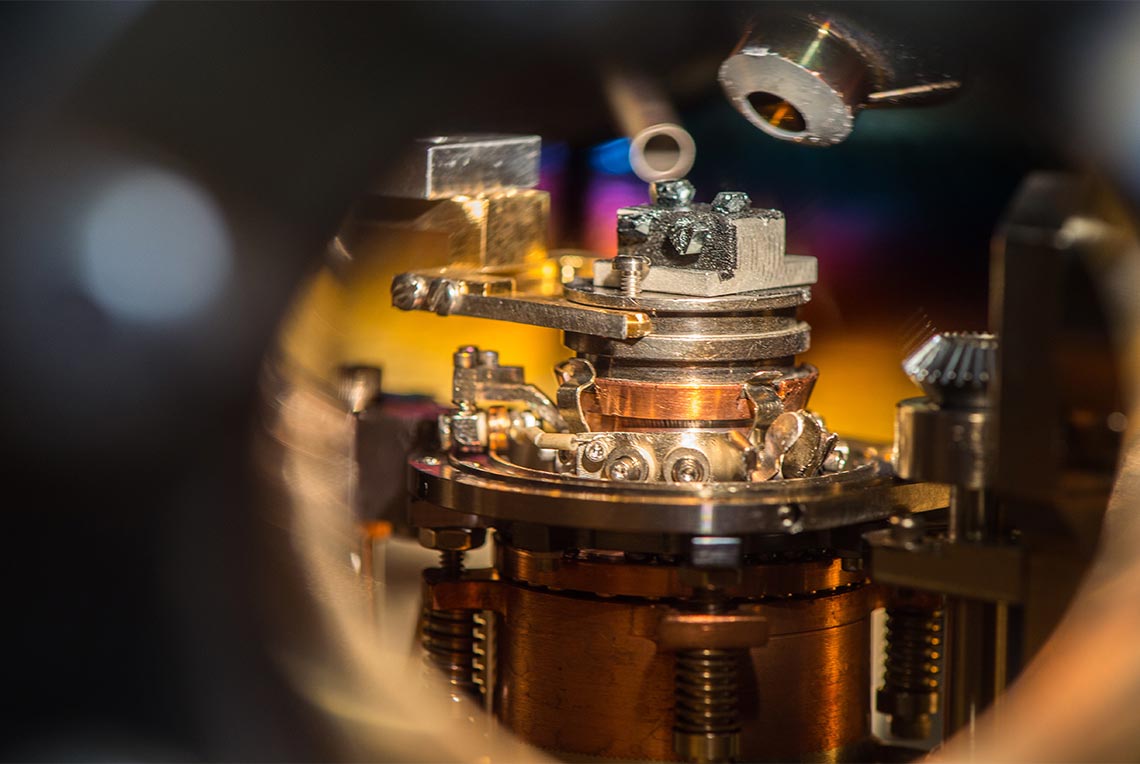Metastable Dion-Jacobson 2D Structure Enables Efficient and Stable Perovskite Solar Cells
Nov. 25, 2021
In this work, we report a general design strategy to maximize hole transport across the bulky cationic organic layers in 2D perovskites by using a metastable Dion-Jacobson (DJ) 2D structure through tuning of hydrogen bonding configurations based on asymmetric organic molecules.
Scientific Achievement
We maximized hole transport across the bulky organic interlayers of metastable DJ 2D perovskite via tuning orientational arrangement of asymmetric organic molecules.
Significance and Impact
Orientational tuning of asymmetric organic molecules provides a new design rule for controlling optoelectronic characteristics of perovskites. Metastable DJ 2D perovskite surface layer reduced the energy barrier for hole transport, leading to highly efficient and stable perovskite solar cells.
Research Details
- Theory and optoelectronic measurements on the impact of orientational tuning of organic molecules on out-of-plane charge transport in 2D perovskites
- 2D perovskite growth kinetics affects orientational arrangement of asymmetric organic molecules
- Detailed spectroscopic, electrical, structural measurements to understand metastable DJ 2D perovskite
Related People
Joseph Berry
National Renewable Energy Laboratory
Matthew Beard
National Renewable Energy Laboratory
Yanfa Yan
University of Toledo
Kai Zhu
National Renewable Energy Laboratory

(A) Illustration of band offsets between inorganic [PbI6] planes and organic cations with a weaker and stronger degree of H-bonding. (B) Two possible arrangements of asymmetric DMePDA2+ cations and the sole arrangement of symmetric BDA2+ cations. (C) Calculated total DOSs of the organic cations in BDAPbI4, DMePDAPbI4-1 (with orientation-1 in (B)), and DMePDAPbI4-2 (with orientation-2 in (B)).









